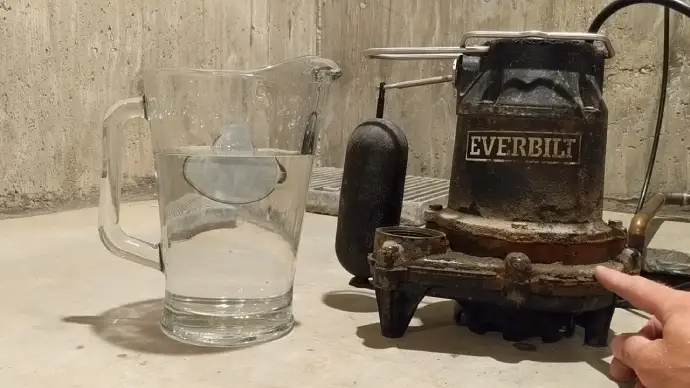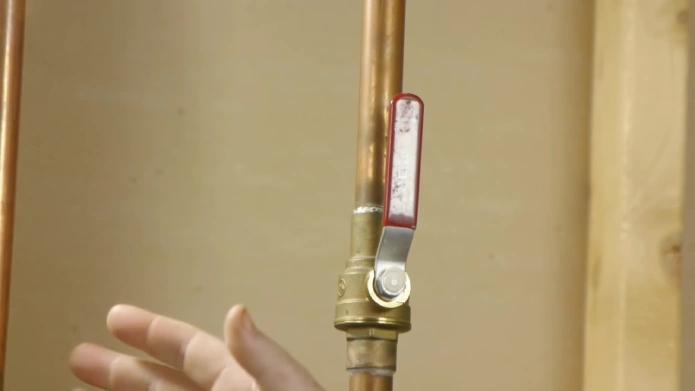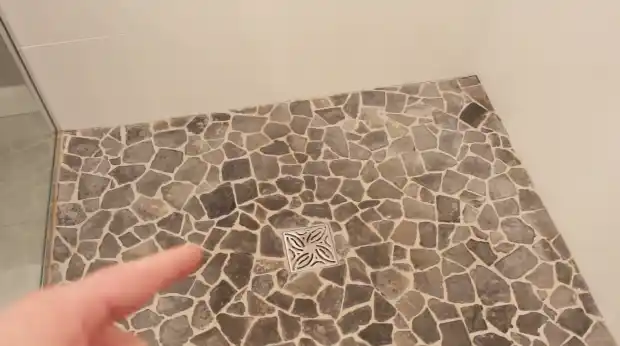Last Updated on July 23, 2023
If you have ever experienced a flood in your basement, there is a high probability that you can blame it on a malfunctioning sump pump. These pumps serve a crucial purpose in home basements, and they prevent flooding and water damage by pumping excess water away.
Unfortunately, basement sump pumps sometimes fail to work efficiently, resulting in disastrous consequences. But have you ever wondered why your sump pump stopped working?
Various things can cause your sump pump to stop working. Some of them include a lack of proper electricity, a jammed float switch, a clogged impeller or intake screen, and issues with the motor.
Today we will discuss the reasons that could be responsible for your sump pump not working. Understanding the reasons behind a malfunctioning sump pump can help you make informed decisions and take preventive measures. Let’s dive into the reasons.
Why is My Sump Pump Not Working: Possible Reasons

Like any other mechanical device, a sump pump can experience problems that would cause it to stop working. Here are some of the most common reasons sump pumps malfunction:
Lack of Proper Electricity
A sump pump relies on electricity to function properly. Therefore, if there is a lack of proper electricity, the pump will not be able to work as it should. This issue can be caused by several factors, such as a power outage or a blown fuse.
Sometimes, the power cord may be damaged or not plugged in correctly, leading to a lack of electricity.
Tripped Breaker
In some situations, a tripped breaker will stop your sump pump. This may happen when the sump pump motor becomes overloaded and causes the electrical circuit to trip.
When this happens, the breaker on your electrical panel will automatically shut off the power to the sump pump. The most common cause of a tripped breaker is an overloaded circuit. This can be due to having too many appliances or electrical devices running simultaneously on the same circuit.
Failed Pump Switch
The pump switch is an essential part of the sump pump system. It is responsible for turning the pump on and off as the water level rises and falls. When the pump switch fails, it will not activate the sump pump, causing it to become ineffective.
This may happen due to wear and tear or damage to the switch caused by debris or other objects that got sucked into the sump pit. You must replace the old pump switch with a new one if it is malfunctioning.
With our detailed blog review of top rated sump pump switches, you can feel confident that your sump pump switch is equipped with all the necessary features for optimal performance. You can discover which switches are rated highest and make an informed purchase decision.
Our review examined two types of sump pump switches: the vertical float switch and tethered float switch. The former rises with water levels while the latter is set on a cord to move horizontally as necessary.
By opting for materials such as stainless steel or cast iron you are investing in quality that will withstand repeated cycles better than plastic models.
To ensure your sump pump runs when needed, it’s important to select a switch that has the power and precision for optimal performance. With an appropriate horsepower rating and adjustable control range, you can be sure of getting maximum efficiency from your equipment every time.
Jammed Float Switch
The float switch in a sump pump is necessary for automatically turning on the pump when the water level in the sump pit rises above a certain level. When the float becomes jammed, the pump may not turn on or off, causing water to accumulate and potentially damaging your property.
This issue may arise due to debris or objects blocking the float or a faulty switch mechanism. To fix this issue, clean any debris or objects around the pump and inspect the float to ensure it moves freely. If the float is still not working, consider replacing it.
Clogged Impeller or Intake Screen
The impeller in a sump pump helps draw water into the pump and push it out through the discharge pipe. Over time, this part can become clogged with debris, such as dirt, leaves, and small rocks.
Similarly, the intake screen intended to prevent this debris buildup may itself become clogged. The pump may not work efficiently or turn on when these parts become clogged.
Blocked Discharge Pipe
The discharge pipe in a sump pump is responsible for carrying water away from your home or business. Over time, the pipe may become blocked by debris, dirt, or other materials, preventing water from leaving the sump pit.
When this happens, the pump may shut down or become overworked, damaging the pump or other parts of your property.
No Weep Hole
One possible reason your newly installed sump pump is not working is the absence of a weep hole. A weep hole or air vent hole is a small opening about 6” above the submersible sump pump that allows stuck air to come out.
Without a weep hole, your pump can become air-locked, resulting in a malfunction. This can be a common issue for older sump pump models or those that have been improperly installed.
Defective Component
Another common reason why your pump may not be working is due to a defective component. A sump pump comprises various parts, including a float switch, check valve, impeller, and motor. If any of these components malfunction, your sump pump may fail to operate.
For instance, a worn-out float switch may not engage the pump, while a broken check valve can cause water to flow back into the sump pit.
Burned-Out Pump Motor
Lastly, a burned-out pump motor is another possible reason your sump pump is not working. Over time, the pump motor can become overworked or clogged with debris, causing it to burn out. You may also experience a power surge or outage that can damage the motor.
If you suspect the pump motor is burned out, you can try resetting it or inspecting the wiring. In any case, if these measures do not work, you may need to replace the motor or hire a professional to do it for you.
What are the Most Common Reasons for Sump Pump Failure?

The sump pump system plays an essential role in keeping our homes dry. Yet, these vital systems can fail with time, leaving homeowners with a significant mess to clean up. The followings usually cause sump pumps to fail:
Switch Stuck in the ON or OFF Position
One of the biggest causes of sump pump failure is having the switch stuck in either the on or off position. When the switch is stuck in the on position, the sump pump continues to run without switching off, even when there is no water to pump. As a result, the sump pump can overheat and cause major sump pump problems.
Alternatively, when the pump switch is locked in the off position, the system fails to turn on when necessary, leaving your home vulnerable to basement flooding. Regularly checking and testing the switch can help to prevent this problem and keep your sump pump functioning properly.
Power Outages
Another common reason for sump pump failure is power outages. Sump pumps rely on electricity and will cease functioning in a power outage. This leaves your home susceptible to flooding, especially during rainy seasons or severe weather conditions.
Homeowners can prevent this by installing a backup power source or a battery-powered sump pump backup system to ensure continuity even during power outages.
Lack of Maintenance
The lack of regular maintenance is another reason for the sump pump failure. Over time, sump pumps can accumulate debris or grow mold, leading to clogged or malfunctioning systems. Also, the sump pump’s float switch can become clogged with dirt or sediment, resulting in malfunction.
Old Age Sump Pump
Lastly, old age also contributes to sump pump failure. Over time, sump pumps experience wear and tear, reducing their overall efficiency and rendering them unable to pump water effectively.
While manufacturers recommend replacing sump pumps every five to seven years, inspecting and servicing the pump regularly can help identify potential sump pump problems and increase its longevity.
How Do I Know If My Sump Pump is Clogged?

When a sump pump becomes clogged, it can result in water accumulation and flooding. If your sump pump is not running efficiently or you suspect it to be clogged, here are some signs to look for:
Not Draining Water or Draining Slowly: If your submersible sump pump is not draining water or draining water slowly, it could mean it’s clogged. This can occur if something gets stuck in the intake mesh or the discharge line is clogged with debris.
Sump Pump Running Constantly: If your sump pump is constantly running, it may be a sign that the pump is clogged or the check valve is not working correctly. The check valve is a mechanism that prevents water from flowing back into the pump after it has been discharged.
Overheated Sump Pump Motor: An overheated motor could signal that the pedestal sump pump is clogged. When clogged, they must work harder to discharge water, causing the pedestal sump pumps to overheat.
Unusual Sounds or Vibrations: If your sump pump makes unusual sounds or vibrations, it may indicate it’s clogged. When debris gets stuck in the impeller or intake mesh, it causes the pump to work harder and can create strange noises and vibrations.
Visible Debris in the Sump Pit: Seeing visible debris or sediment in your sump pit may indicate that your pump is clogged. When the impeller or intake mesh is obstructed, it can cause debris to accumulate in the pit.
What Should I Do to Get My Sump Pump Working Again?

When your sump pump stops working, it becomes a top priority. If you find yourself in a situation where your sump pump is malfunctioning, don’t worry. Try the following steps to get your sump pump working again:
Check the Power Before Trying Other Troubleshooting
If your sump pump malfunctions, check the power supply first. Make sure it is plugged in securely and that the outlet is working. If your outlet is not working, test other outlets in the same room.
Try resetting the breaker that controls the sump pump if it’s tripped. In case there is no apparent power issue, move on to the next step.
Check the Extension Cord If You’re Using
Another factor to consider when troubleshooting a sump pump is the extension cord. If you’re using one, ensure it suits the sump pump usage. Extension cords can go bad, so if you suspect it might be the issue, try using another one to make sure.
It is best to use a heavy-duty, grounded extension cord with a length of 10 feet or less for your sump pump.
Try Manually Lifting the Float Switch
If previous troubleshooting techniques don’t solve the problem, it’s time to try pushing up or raising the float switch. As water collects in the sump pit, the float switch should automatically rise and turn on the pump.
If the float switch doesn’t activate the pump, it could be that it is not positioned correctly or there is an issue with the switch itself. Try gently lifting and rereleasing the float to see if this solves the problem.
Inspect the Check Valve, Impeller, and Discharge Line
Check your impeller, check valve, and discharge line if your basement sump pump runs but refuses to remove water.
The check valve is responsible for preventing any backflow of water, ensuring that water only flows in one direction. The impeller, on the other hand, is responsible for pumping water out of the sump pit. Ensure both are clean and free of any debris hindering functioning.
Also, the discharge line should be free from clogs or obstructions, letting water out of the sump pit quickly.
Check the Motor Itself for Burnouts
If your sump pump motor stops running, there might be a possibility that it has burned out. If you suspect your motor has burned out, unplug the sump pump and check the motor.
Look for any signs of damage, such as smoke or a burnt odor. If you notice any of these signs, replacing the motor with a new one is advisable.
Despite this, if you do not see any visible signs of damage, check if the pump is properly connected to the electrical outlet. Sometimes, a sump pump may not run due to an electrical connection problem.
Call a Technician if Troubleshooting Doesn’t Work
If you have tried all the troubleshooting of your sump pump, but it still won’t work, it is time to call a professional technician. A qualified technician understands the complexities of these devices and can identify the root cause of the malfunction.
They can troubleshoot and diagnose the problem and recommend the necessary repairs or replacements. Choosing a trustworthy and experienced technician is essential to ensure your sump pump will function correctly and safely.
Protect Your Home’s Foundation: Care For Your Basement Sump Pump
A properly functioning sump pump is a must-have tool when protecting your home’s foundation from water damage. Unfortunately, a faulty or poorly maintained sump pump can leave you vulnerable to costly repairs or even complete foundation failure.
As a homeowner, it is essential to understand why sump pumps fail and take preventative measures before disaster strikes. Regular maintenance and inspections from a professional plumber can help ensure your sump pump works efficiently and catch any potential issues before they become significant problems.
Be sure to address a malfunctioning sump pump before it’s too late. Contact an expert to diagnose and repair the issue before it becomes an expensive and time-consuming headache.



